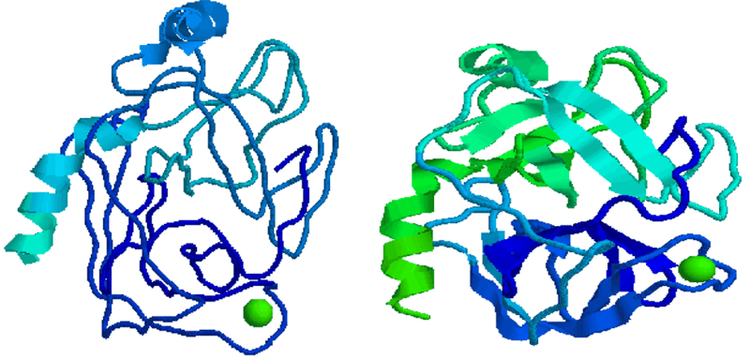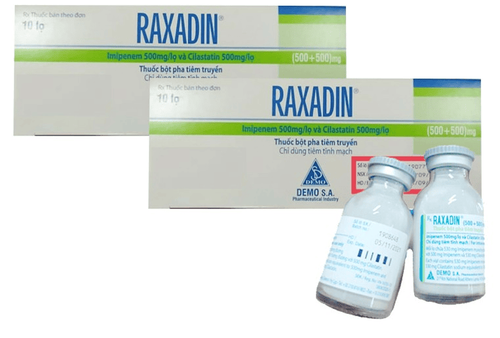This is an automatically translated article.
The article is written by Master, Doctor Mai Vien Phuong - Gastroenterologist - Department of Medical Examination & Internal Medicine - Vinmec Central Park International General Hospital.
1. Overview
In February 2016, SCCM and the European Society of Intensive Care Medicine jointly defined sepsis as follows: “Sepsis is a life-threatening organ dysfunction resulting from a of the host is dysregulated to infection”. This definition emphasizes the close relationship between sepsis and organ dysfunction.
The gut microbiota is an important component of the gut, playing a key physiological role in the context of biosynthesis and metabolism. However, critical diseases lead to many changes in the diversity of the gut microbiota, causing an overgrowth of pathogenic bacteria.
Sepsis refers to a life-threatening organ dysfunction caused by an imbalanced response to infection. As the largest reservoir of bacteria and endotoxins in the body, the intestinal tract is considered the "engine" of sepsis and multi-organ dysfunction syndrome. Under normal circumstances, the gut microbiota plays a beneficial role in physiological and immunological contexts, existing in a homeostasis important for the maintenance of human health.
2. Correlation between gut bacteria and clinical indicators in sepsis patients
The authors' study showed a clear correlation between the abundance of gut microbiota and clinical indicators in sepsis. The clinical indices used in this study were D-Lac, endotoxin, DAO and PCT. Under normal circumstances, D-Lac is produced through the metabolism of methylglyoxal, the amount of which in the blood is very small.
However, when glycolysis increases the number of gastrointestinal bacteria and the intestinal barrier function is impaired, D-Lac levels increase sharply. Endotoxins are cellular components of Gram-negative bacteria that are released only when the bacteria are lysed and killed. DAO is a highly active intracellular enzyme in the upper villi of the intestinal mucosa of mammals, including humans. Its activity is associated with the synthesis of nucleic acids and proteins in mucosal cells. Therefore, the above three indices may reflect the integrity and extent of damage of the mechanical barrier of the intestine.
In addition, PCT reflects the activity level of the systemic inflammatory response, factors affecting its level, including the size and type of infected organ, the type of bacteria causing the disease, the degree of inflammation and immune response status. The authors' study showed that serum PCT, endotoxin, DAO and D-Lac levels in sepsis patients were correlated with the abundance of different gut bacterial genera.
Notably, some of these genera were correlated with multiple clinical indicators at once. For example, Peptostreptococcus and Dorea abundance were positively correlated with serum PCT, endotoxin and DAO concentrations; Furthermore, Roseburia abundance was positively correlated with serum concentrations of PCT, endotoxin and D-Lac.

3. Ruminococcus abundance had the highest positive correlation with PCT . index
Ruminococcus is an important component of the normal intestinal flora. A study published in 2017 using samples from young Han individuals showed changes in the gut microbiota of the Chinese population, with the genera Ruminococcus and Fusobacterium among those. was significantly different in obese Chinese subjects, while bacterial abundance was significantly reduced. Notably, two Ruminococcus species, strains Ruminococcus and gnavus Ruminococcus, should be mentioned because they are associated with inflammatory bowel disease and metabolic disorders. Importantly, from a significant decrease in the number and abundance of gut bacteria, including a decrease in the number of bacteria belonging to the family Phylum Bacteroidetes, an increase in the abundance of the species Verrucomicrobia, and an increase in the abundance of the species Verrucomicrobia. Ruminococcus genera abundance in patients with sepsis, the authors were able to parallelize the results of the Chinese obese study.In clinical practice, it is known that obese individuals are characterized by insulin resistance and dyslipidemia with a more significant inflammatory phenotype, which is a risk factor for cardiovascular diseases, diabetes, osteoporosis and some cancers among others. Interestingly, patients with sepsis also have clinical manifestations such as insulin resistance, dyslipidemia, and inflammatory responses, which have a negative impact on disease severity and prognosis. Therefore, the authors boldly speculate that the intestinal phenotype of obese patients makes them more susceptible to complications of sepsis, which has major implications for the treatment and prevention of infections. blood. Of course, the sample size in this study was small, so larger multicenter studies are needed to support the findings. Furthermore, the proposed mechanism requires further confirmation in animal studies for clarification.
4. Correlation between gut microbiota disorders and intestinal barrier dysfunction
The authors' study showed that the abundance of Roseburia in the intestinal tract of sepsis patients is definitely related to the concentration of serum markers of intestinal barrier function. Roseburia is one of the major butyrate-producing bacterial genera in the human gut microbiota. Butyrate is the main energy source of colon epithelial cells. The study found that the abundance of butyrate-producing bacteria in the gut in patients was reduced or disappeared, leading to reduced butyrate production and starvation-induced death of intestinal epithelial cells. More importantly, a study has shown that the genus Roseburia can improve intestinal ecology, prevent leaky gut, and reduce the incidence of diabetes.
5. Roseburia was significantly reduced in patients with Crohn's disease and inflammatory bowel disease
The authors' study showed that the abundance of Roseburia in the intestine was positively correlated with serum PCT, endotoxin and D-Lac concentrations in patients with hematologic indices. In particular, the intestinal barrier function was also impaired and the systemic inflammatory response was severe with higher concentrations of Roseburia, which seems to contradict the results of existing studies.
The authors speculate that systemic inflammatory responses in sepsis patients cause intestinal damage and that the body has a self-regulating effect on this injury. In addition, a recently published study showed that the immune cells and autoantibodies of patients with antiphospholipid syndrome (an autoimmune disease) can cross-react with the disease's mimetic epithelium. Roseburia. Along with this, Roseburia can also induce autoimmune diseases in susceptible mice. Again, these results suggest that the positive and negative effects of gut bacteria are not constant.
6. Bacteria can sense changes in the environment inside the host
Under various stimuli such as sepsis, trauma and burns, a healthy strain of bacteria can transform into pathogenic bacteria within a few hours. For example, Pseudomonas aeruginosa was injected into the cecum of mice in a sham surgery group for culture, then the bacteria were collected and inoculated into the undamaged abdominal cavity of the mice; It was found that no deaths occurred.
However, the same line was injected into the cecum of mice after 30% liver resection for culture, which was then collected and implanted into the uninjured abdominal cavity of mice, resulting in their death. Although the underlying mechanisms of such variation remain inconclusive, these results suggest that the host environment can not only alter bacterial species diversity, but also alter toxicity. their force. Therefore, the beneficial or harmful effects of a particular bacteria are not absolute, they can be influenced by many factors.
7. Conclusion
In this study, the authors reported that sepsis patients in the ICU presented with dysbiosis of the gut, lasting at least 1 week. Furthermore, gut microbiota disturbances are correlated with inflammatory and intestinal barrier-related indices in sepsis. However, this study is not without limitations. Because of the small sample size, larger and multicenter studies are needed to support these findings. Additional animal studies may be needed to elucidate the molecular mechanisms involved.
Please dial HOTLINE for more information or register for an appointment HERE. Download MyVinmec app to make appointments faster and to manage your bookings easily.
References: Yang XJ, Liu D, Ren HY, Zhang XY, Zhang J, Yang XJ. Effects of sepsis and its treatment measures on intestinal flora structure in critical care patients. World J Gastroenterol 2021; 27(19): 2376-2393 [DOI: 10.3748/wjg.v27.i19.2376]














